In the realm of medical advancements, much of what we understand today has developed over the last five hundred years. However, how did humans navigate the complexities of health and anatomy before this period? Surprisingly, ancient civilizations possessed knowledge about medicine and life sciences, albeit in forms that differ from our contemporary understanding. This article delves into two significant scriptures from the Vedas: the Garbha Upanishad and the Shiva Purana, which provide extensive insights into embryology and the human anatomy.
Table of Contents
- Understanding Garbha Upanishad
- Scheme of Human Anatomy
- Development Process of the Human Fetus
- Gender Determination and Conception of Twins
- Psychological and Spiritual State of the Fetus
- Anatomy of the Newborn Child
- Shiva Purana: Another Dimension of Human Anatomy
- Conclusion: The Legacy of Ancient Knowledge
- Frequently Asked Questions (FAQ)
Understanding Garbha Upanishad
The term “Garbha” refers to the embryo, while “Upanishad” indicates a branch of knowledge acquired through close association with a guru. The Garbha Upanishad, authored by Mahasri Pipalada, is a comprehensive text that elucidates the intricacies of human anatomy and the development of the fetus. It is part of the Adharvana Veda and serves as a source of self-study and realization, guiding individuals toward understanding the true purpose of life and ultimately achieving Moksha, or liberation.
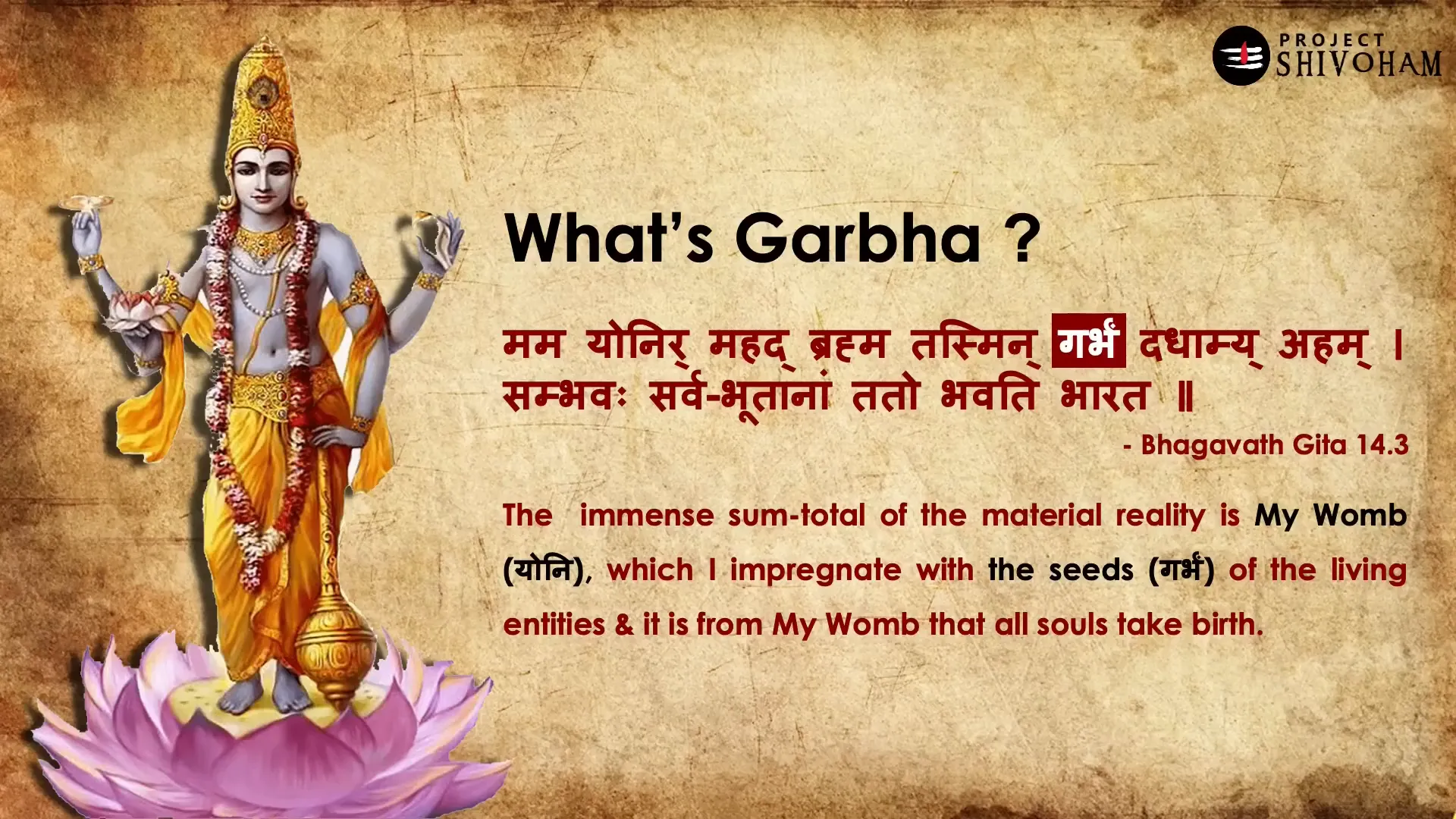
One of the remarkable assertions found in the Garbha Upanishad is the scientific explanation of reproduction. It states that the confluence of a man’s semen (Shukra) and a woman’s ovum (Shonita) is what leads to conception, a fact that modern science only confirmed around 250 years ago. This ancient text, however, presented this information long before it was scientifically established. The essence of Garbha Upanishad lies in its detailed exploration of five key aspects:
- Scheme of human anatomy
- Development of the human fetus
- Gender determination and conception of twins
- Psychological and spiritual state of the fetus
- Anatomy of the newborn child
Scheme of Human Anatomy
The Garbha Upanishad begins with a comprehensive overview of human anatomy. Maharishi Pipalada explains that the body comprises five elements (Panchatmaka), exists in five different states, and is associated with six qualities (gunas). It consists of seven components and three residues (malas). The intricate articulation of human anatomy in just one master shloka sets the stage for a deeper understanding of the human body.
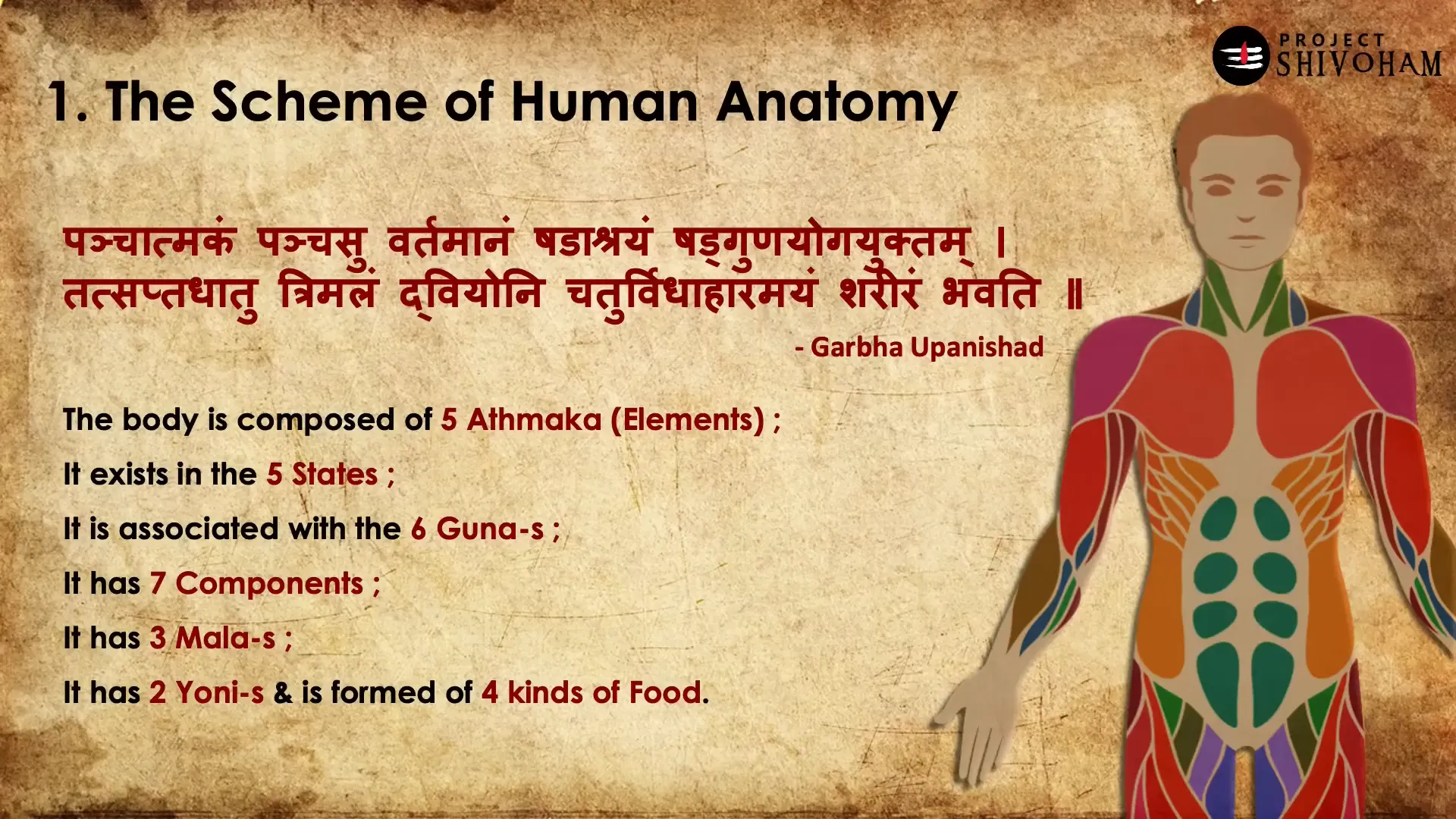
The five elements making up the human body are:
- Prithvi: Earth
- Apas: Water
- Tejas: Fire
- Vayu: Air
- Akasha: Space
Each element contributes unique properties to the human body. For instance, earth represents hardness, water signifies fluidity, fire symbolizes inflammation, air denotes mobility, and space embodies specialty. This classification aligns with Ayurvedic principles, illustrating how ancient wisdom parallels modern scientific understanding.
The Reproductive Elements
The text emphasizes the importance of reproductive elements, highlighting that the human body is composed of seven vital components known as Sapta Dhatu. These include:
- Rasa: Lymph
- Rakta: Blood
- Mamsa: Muscle
- Medha: Fat
- Asti: Bones
- Majja: Bone marrow
- Shukra: Reproductive element
The confluence of Shukra and Shonita, as articulated in Garbha Upanishad, leads to the formation of Garbha, or the embryo. This ancient text thus presents a foundational understanding of human reproduction that resonates with contemporary biological science.
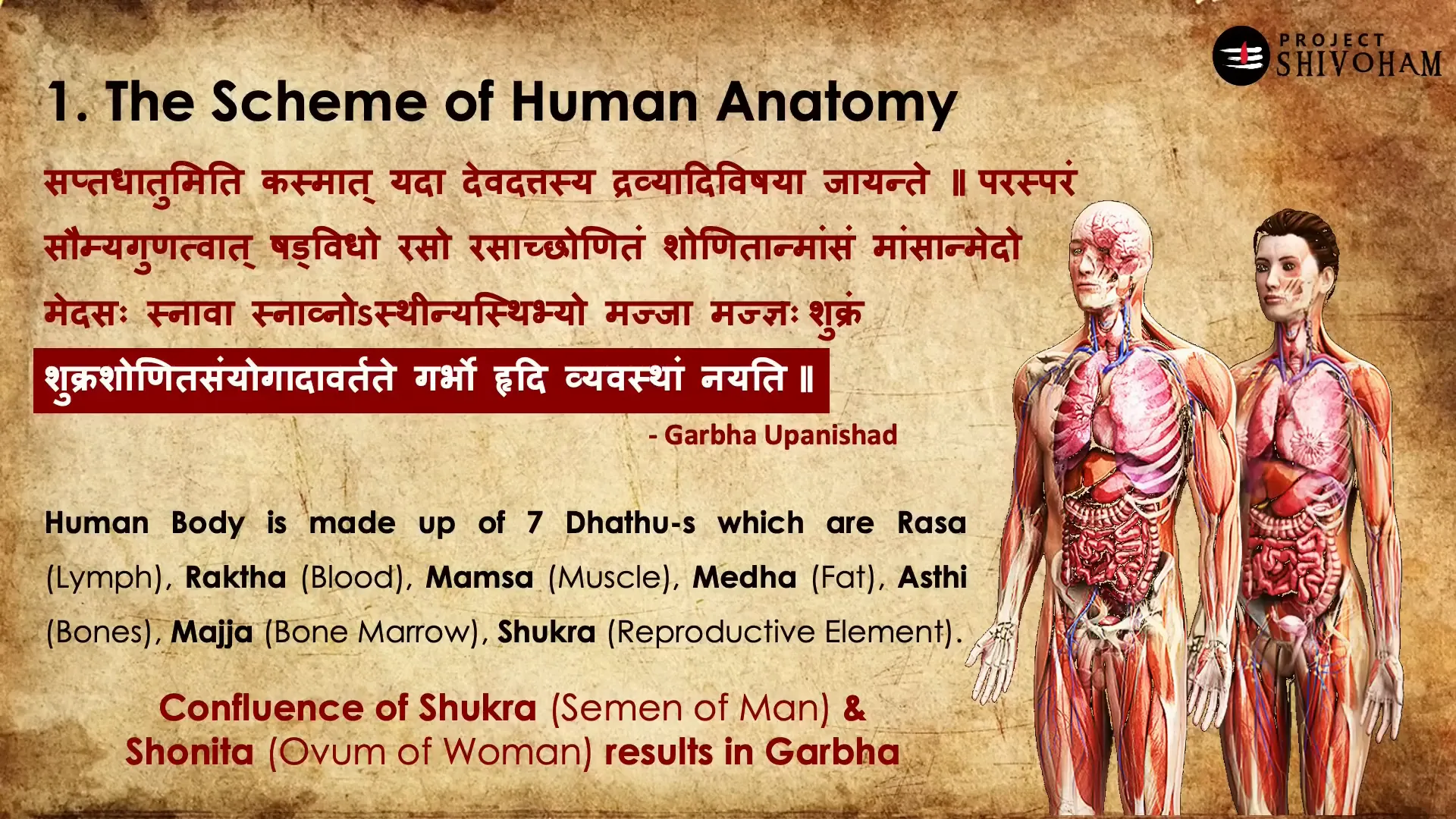
Development Process of the Human Fetus
One of the most intriguing aspects of Garbha Upanishad is its detailed account of the fetal development process, outlined month by month. The stages of development are remarkable in their precision and align closely with modern medical insights.
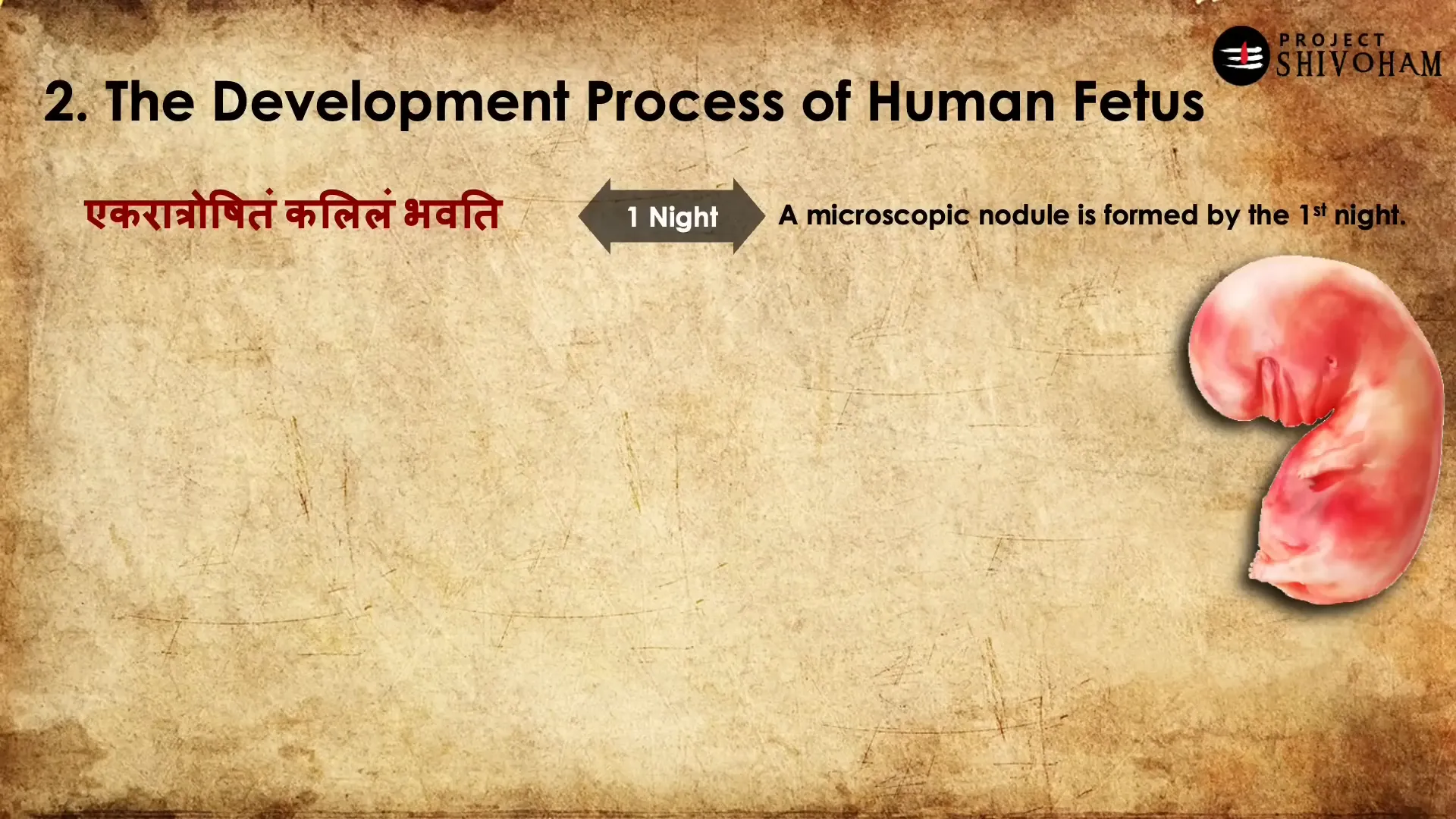
Stages of Fetal Development
The development stages outlined in the Upanishad are as follows:
- Day 1: Formation of a microscopic nodule.
- Week 1: Development into a small bubble.
- 15 Days: Formation of a lump of flesh.
- 1 Month: Structure hardens.
- 2 Months: Head formation.
- 3 Months: Formation of feet.
- 4 Months: Development of fingers, belly, and hips.
- 5 Months: Formation of the vertebral column.
- 6 Months: Development of mouth, nose, ears, and eyes.
- 7 Months: Union with the soul (jiva).
- 8 Months: Full body development.
- 9 Months: Completion of cognitive abilities.
This meticulous detailing of fetal development showcases the wisdom of ancient texts, which predate modern scientific discoveries by centuries. The alignment of these stages with modern embryology highlights the profound understanding of human biology present in ancient Indian scriptures.
Gender Determination and Conception of Twins
Another fascinating aspect discussed in Garbha Upanishad is the determination of the fetus’s gender. According to the text:
- If the father’s semen is preponderant, a boy is born.
- If the mother’s semen is preponderant, a girl is born.
- If both are equipotent, a genderless baby is born.
While this explanation does not align with modern genetic understanding, it is significant to note that it recognizes the existence of a gender-neutral identity, which reflects a more inclusive perspective of ancient Indian society.
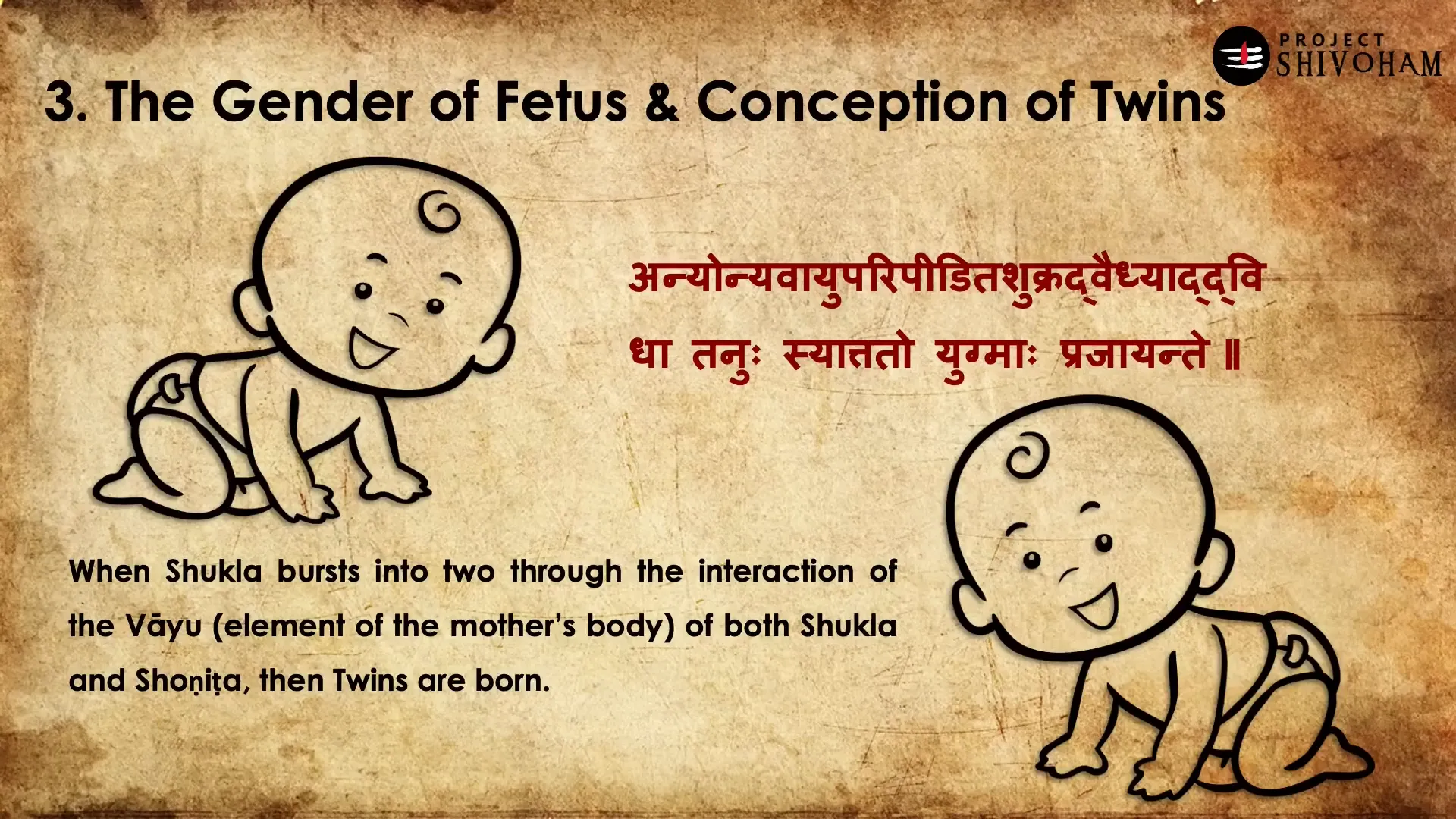
Regarding the conception of twins, the Garbha Upanishad explains that when the fertilized egg is pressed by the vayu element in the mother’s body, it splits into two, resulting in twins. This description is consistent with current scientific explanations of twin conception, showcasing an understanding of reproductive biology that resonates with modern science.
Psychological and Spiritual State of the Fetus
One of the most profound aspects of the Garbha Upanishad is its exploration of the psychological and spiritual state of the fetus. The text posits that the fetus possesses the capacity for thought and introspection, reflecting on past lives and its journey.
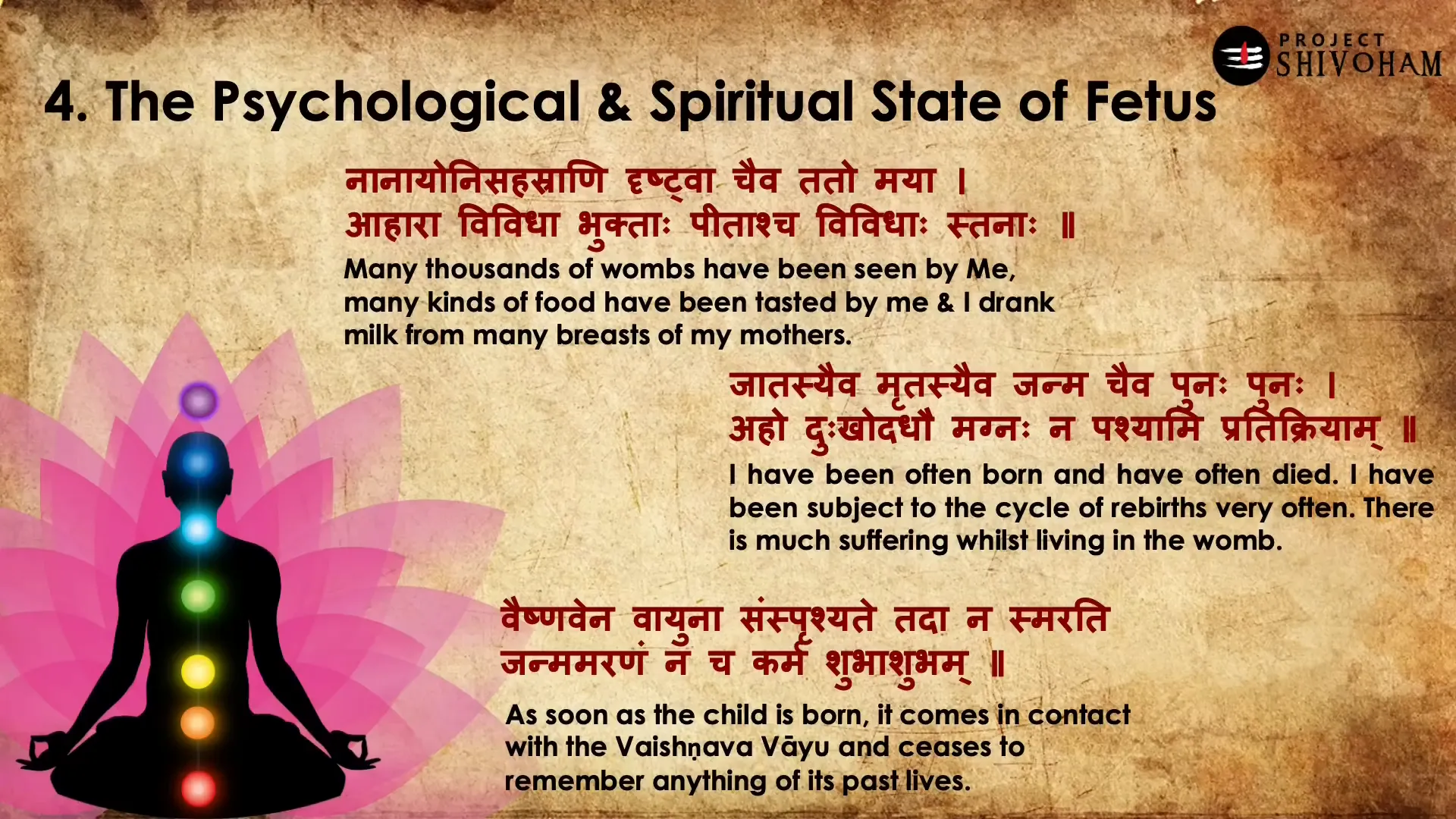
It is suggested that the fetus experiences sensations akin to being tormented in the mother’s womb, akin to being submerged in a melting pot of iron due to the gastric fire of the mother. This metaphor illustrates the discomfort experienced by the fetus, emphasizing the connection between the mother and child.
The fetus, in its introspection, contemplates its past lives and expresses a desire to break free from the cycle of rebirth. This spiritual introspection is a unique aspect of the Garbha Upanishad, offering insights into the philosophical dimensions of life and existence.
Anatomy of the Newborn Child
Finally, the Garbha Upanishad details the anatomy of the newborn child, providing a comprehensive overview of its physical structure. This includes specifics such as:
- Four skull bones in the head
- Sixteen tooth cells on both sides
- One hundred and eighty bone joints
- Five hundred muscles
- Three hundred and sixty bones
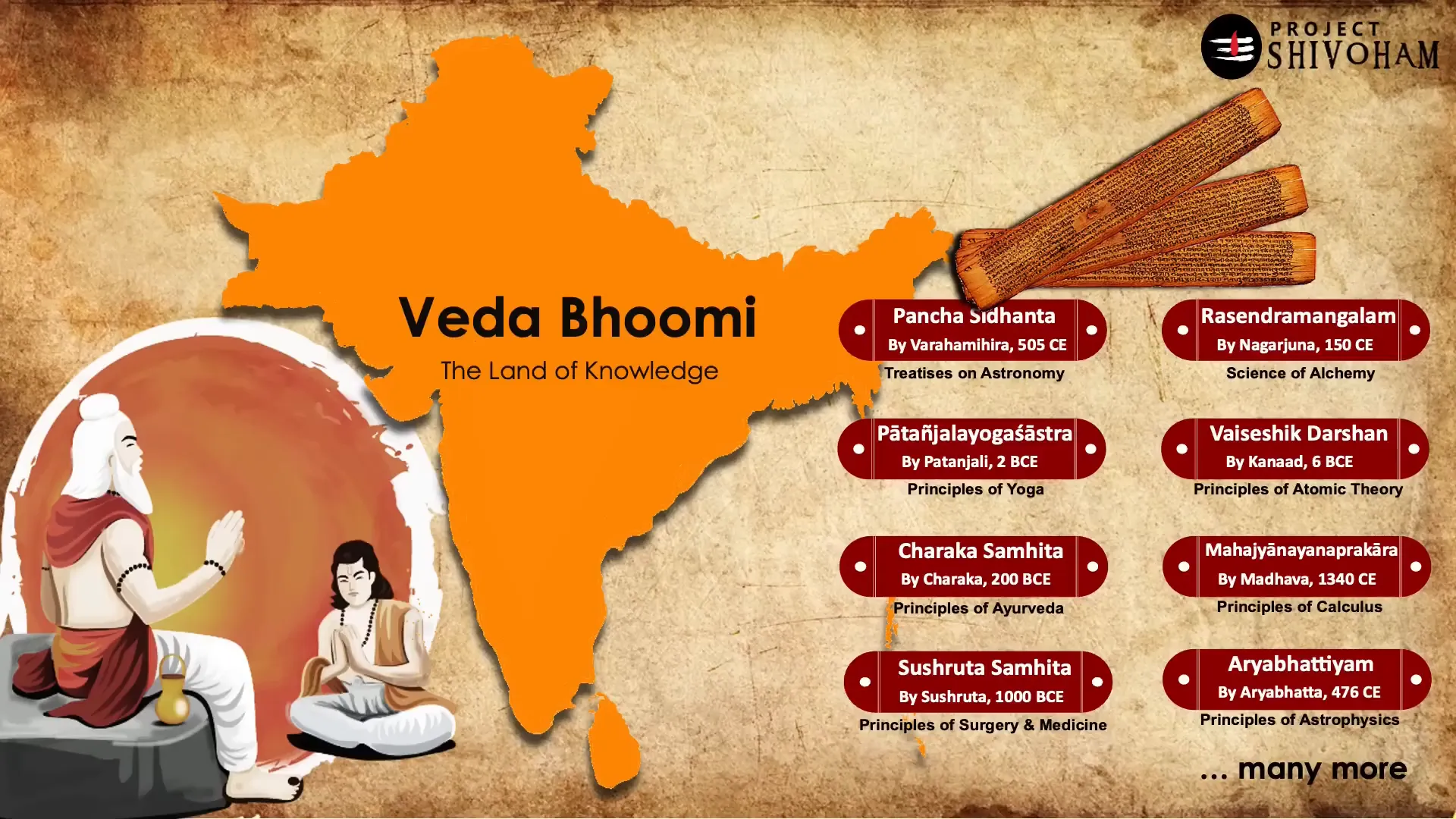
The detailed description of the newborn’s anatomy serves to reinforce the advanced understanding of human biology that existed in ancient Indian texts. The precision of these anatomical details showcases the depth of knowledge that ancient scholars possessed.
Shiva Purana: Another Dimension of Human Anatomy
In addition to the Garbha Upanishad, the Shiva Purana also provides extensive insights into human anatomy and the process of birth. The Shiva Purana, attributed to Vedavyasa, consists of multiple sections, including the Umasamhita, which focuses on human development.
Three Chapters of Human Anatomy
The discussion in the Shiva Purana is structured into three chapters:
- Metabolism in human beings
- Pregnancy and fetus development
- Psychology of the fetus
This structure allows for a holistic understanding of human anatomy, from the metabolic processes that sustain life to the developmental journey of the fetus and its psychological experiences.
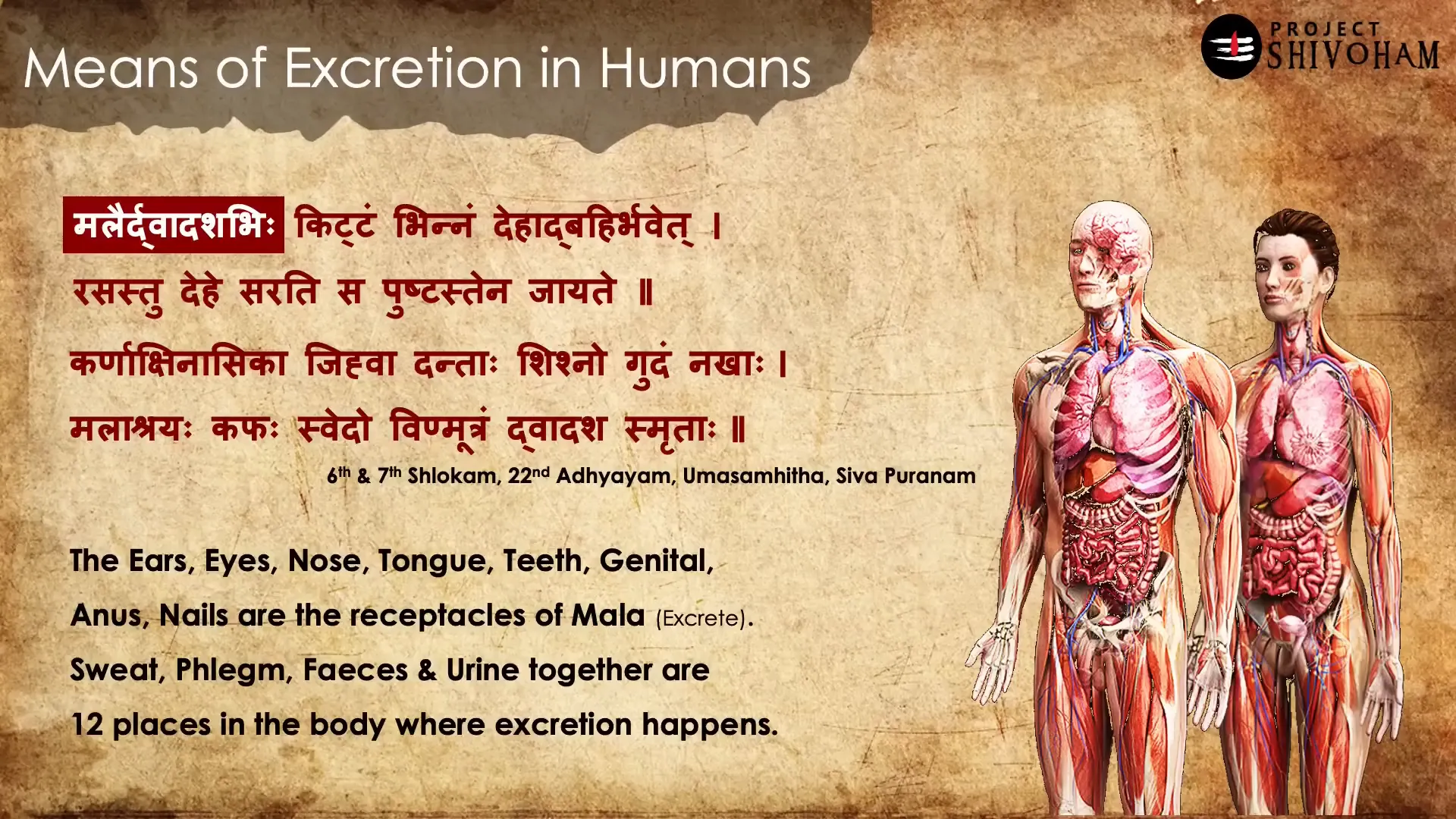
Metabolism Explained
The Shiva Purana elaborates on the metabolism in human beings, detailing how the body processes various functions, including excretion. It describes how the flow of vital energy (rasa) through channels (nadis) is essential for sustaining life. This perspective emphasizes the interconnectedness of physical and energetic processes within the body.
Pregnancy and Fetus Development
Similar to the Garbha Upanishad, the Shiva Purana outlines the stages of fetal development, providing a timeline for the formation of various body parts. This alignment between the texts underscores the depth of understanding present in ancient Indian scriptures concerning human development.
Psychological Insights
The Shiva Purana also touches upon the psychological state of the fetus, echoing the sentiments expressed in the Garbha Upanishad. The notion that the fetus engages in introspection and reflects on its past lives emphasizes the spiritual dimension of existence, a theme prevalent in many aspects of Sanatana Dharma.
Conclusion: The Legacy of Ancient Knowledge
The insights provided by the Garbha Upanishad and the Shiva Purana illuminate the profound understanding of human anatomy and embryology that existed in ancient Indian texts. These scriptures not only present scientific concepts but also weave in philosophical and spiritual dimensions, enriching our comprehension of life and existence.
As we continue to explore the depths of ancient knowledge, it becomes evident that these texts offer valuable perspectives that can complement modern scientific understanding. The legacy of Bharat as a land of knowledge is reflected in these scriptures, urging us to recognize and appreciate the wisdom of our ancestors.
Frequently Asked Questions (FAQ)
What is the Garbha Upanishad?
The Garbha Upanishad is an ancient Indian scripture that provides insights into embryology and human anatomy, detailing the stages of fetal development and the psychological state of the fetus.
How does the Garbha Upanishad relate to modern science?
The Garbha Upanishad contains scientific concepts about human anatomy and reproduction that align with modern biological understanding, showcasing the advanced knowledge of ancient scholars.
What is the significance of the Shiva Purana?
The Shiva Purana is another ancient text that elaborates on human anatomy and the process of birth, providing a holistic understanding of metabolism, pregnancy, and the psychological experiences of the fetus.
How can I learn more about these texts?
Exploring translations and commentaries on the Garbha Upanishad and Shiva Purana can provide deeper insights into their teachings and significance in understanding human anatomy and spirituality.
In conclusion, the exploration of the human anatomy as described in the Vedas invites us to reflect on the vast and rich heritage of knowledge that has shaped our understanding of life. As we continue to delve into these ancient texts, we uncover layers of wisdom that remain relevant even in contemporary discourse.
This article was created from the video The Human Anatomy as per Vedas with the help of AI. Thanks to Aravind Markandeya, Project Shivoham.